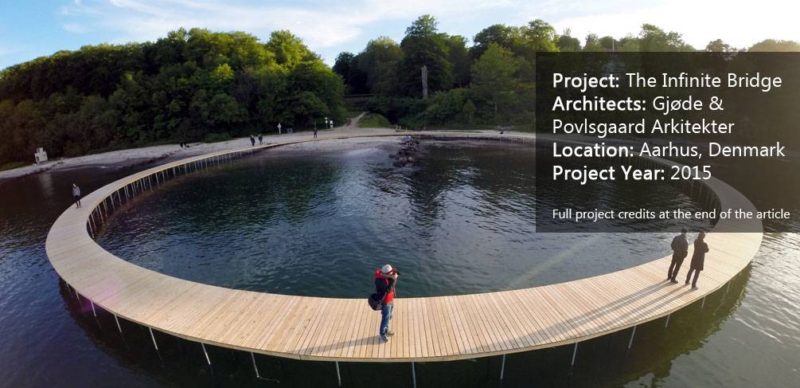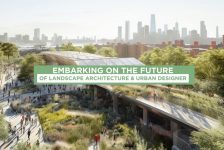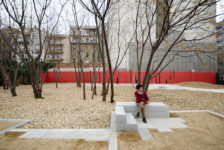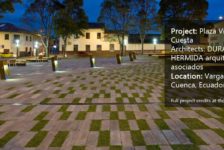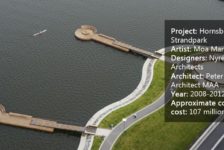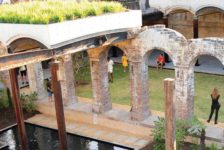The Infinite Bridge, by Gjøde & Povlsgaard Arkitekter in Aarhus, Denmark. In 2015 the duo of Gjøde & Povlsgaard Arkitekter debuted their sensational Infinite Bridge which lets us experience the impossible. As if walking on water, we are being given the opportunity to encounter our surroundings from a whole new perspective- not to be experienced anywhere else in the world. The Infinite Bridge was built and exhibited as a part of the annual international biennale- “Sculpture by the Sea 2015”, which takes place in the coastal and picturesque Danish city of Aarhus.
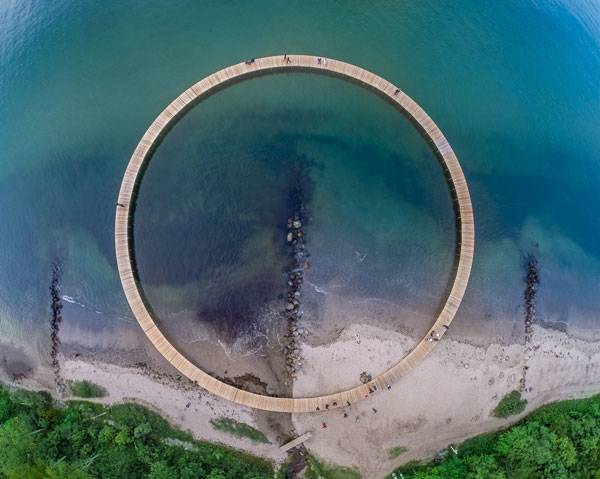
The Infinite Bridge. Photo credit: Aarhus I Billeder
The Infinite Bridge
The architects have chosen the bridge to be circular as to allow its users to encounter the surrounding landscape from limitless angles and orientations. This feature creates a sensation of experiencing the changing surroundings of the bridge as an endless, living panorama. We, as users suddenly become aware of the harmonic relation between the natural landscape of the bay and the city around it. The different layers of the landscape now make one magnificent whole.
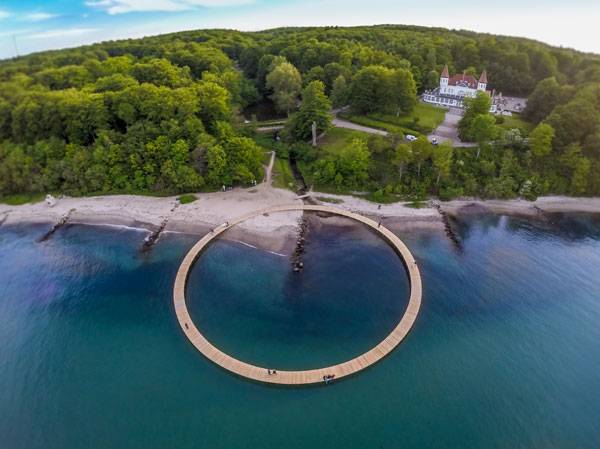
The Infinite Bridge. Photo credit: Aarhus I Billeder
No Railings!
The fact that the bridge is not limited by any type of railings whatsoever, not only helps to enhance the beauty of the view, but also lets its users soak their feet in the sea, when the tide is right. Users are free to use the bridge in any way they wish- they can walk around it, stand on it, sit or even jump into the water as the deck of the bridge rises between one meter to two meters above the sea surface (depending on the tide).
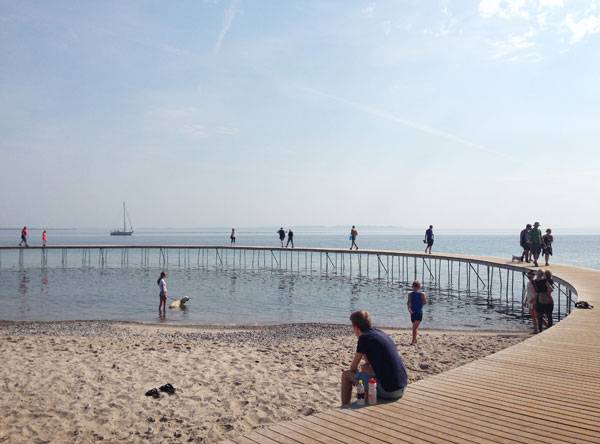
The Infinite Bridge. Photo credit: Gjøde & Povlsgaard Arkitekter.
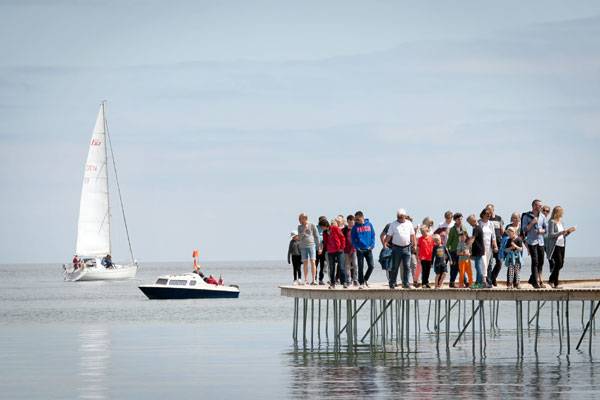
The Infinite Bridge. Photo credit: Peter Hastrup Jensen
Undistracted, Limitless View
Not only is the bridge’s shape proof of the architects’ solid analysis of the design- it’s diameter and positioning have also been carefully thought about. The diameter of 60 metres allows the strolls of the users to take just enough time- the bridge is not too small, nor too big. 60 metres of diameter seems just right for we do not get a sensation of dizziness, as the bridge is not too small, nor do we get tired as our walk on the bridge is not too long. Also, this quality allows the users to interact with each other naturally- on our circular walk we are being given countless opportunities to meet new people- otherwise impossible to be experienced and enjoyed in everyday urban scenario.
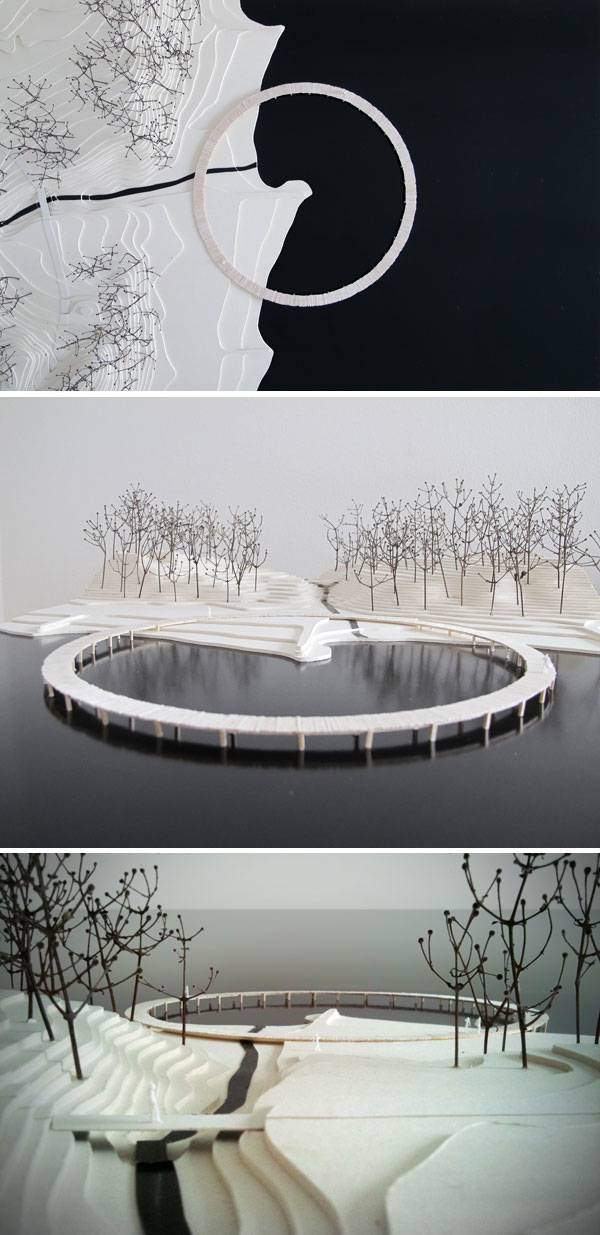
The Infinite Bridge Model. Photo credit: Gjøde & Povlsgaard Arkitekter.
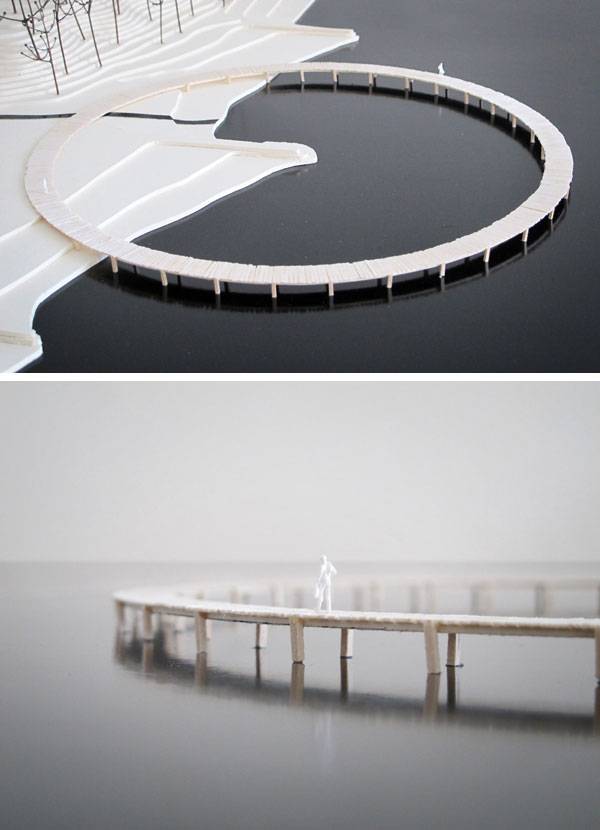
The Infinite Bridge Model. Photo credit: Gjøde & Povlsgaard Arkitekter.
Natural Geometry
Being positioned partly on the beach and partly in the sea The Infinite Bridge’s geometric shape (believe it or not) follows the natural contours of its surroundings. The Bridge is located at the mouth of a small river valley stretching from the coast into the nearby forest, hence accentuating the key feature of this part of the bay.
Modern Sentiment
The infinite bridge is not only an excellent landscape feature, but also is a symbolic connection between the old and the new. The bridge touches a site where a pier has been once located. Back in the day people used to arrive there in steamboats, mainly for the Varna Pavilion sitting on the hillside above the beach. The Pavilion with the scenic landscape surrounding its terraces, restaurant and dancehall was once one of the most popular destinations in the area. The now non-existent pier was a connecting point between the seaside and the Pavilion. The landing dock of the pier was a focal point of the area, as we could admire the pavilion in its all grace- right from the pier.
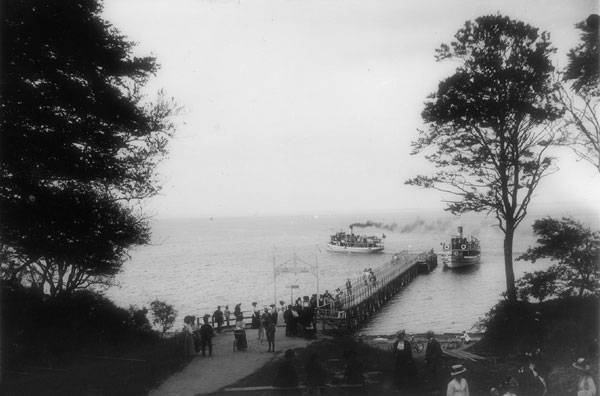
Photo credit: Danskebilleder.dk
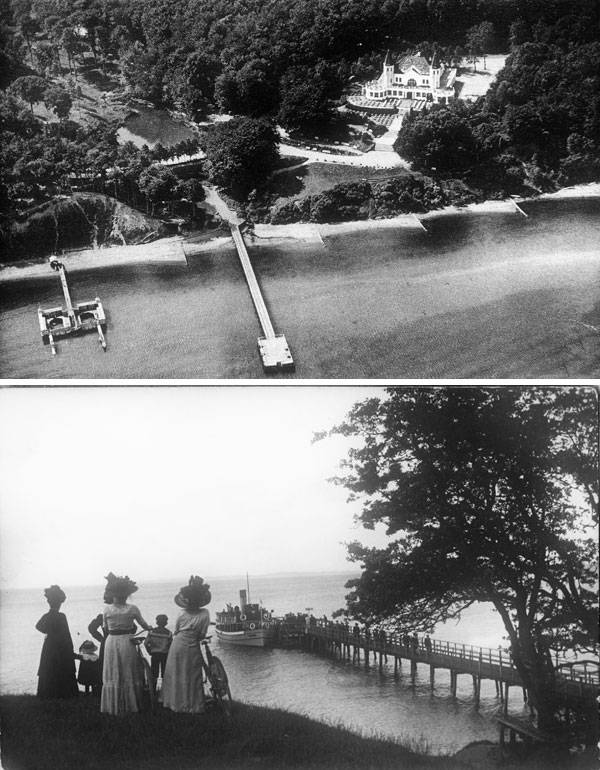
Photo credits: Danskebilleder.dk
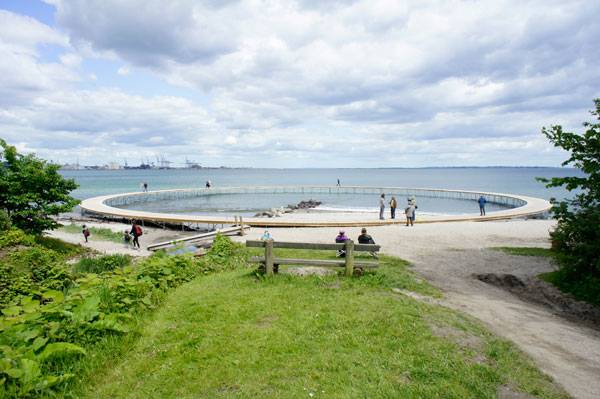
The Infinite Bridge. Photo credit: DANISH TM
Art given a function
When looking at the Infinite Bridge we wonder if this is architecture or art? Gjøde & Povlsgaard are well known for their extraordinary landscape features which can easily be taken as art. It is no surprise then, that their Infinite Bridge shines a new light on the definition of functional art in landscape architecture. The circular bridge creates a setting where people can meet and soak in the natural art being the landscape from a completely new perspective. So keeping all of the above in mind, let me ask You two simple questions: Are You a fan of extravagant and surprising art? Or maybe are you a fan of meeting new people in unusual places? If Your answer is “yes” to either of the above questions, then the Infinite Bridge is something you definitely need to see!
WATCH: The Infinite Bridge – Den Uendelige Bro 1080p HD
Full Project Credits For The Infinite Bridge
Project: The Infinite Bridge Architects: Gjøde & Povlsgaard Arkitekter Location: Aarhus, Denmark Project Year: 2015 Photographs: Aarhus I Billeder, Peter Hastrup Jensen, Danish TM, Courtesy of Gjøde & Povlsgaard Arkitekter, danskebilleder.dk Video: Aarhus I Billeder Show on Google Maps Recommended Reading
- Landscape Architecture: An Introduction by Robert Holden
- Landscape Architecture, Fifth Edition: A Manual of Environmental Planning and Design by Barry Starke
Article by Joanna Łaska
Published in Blog

